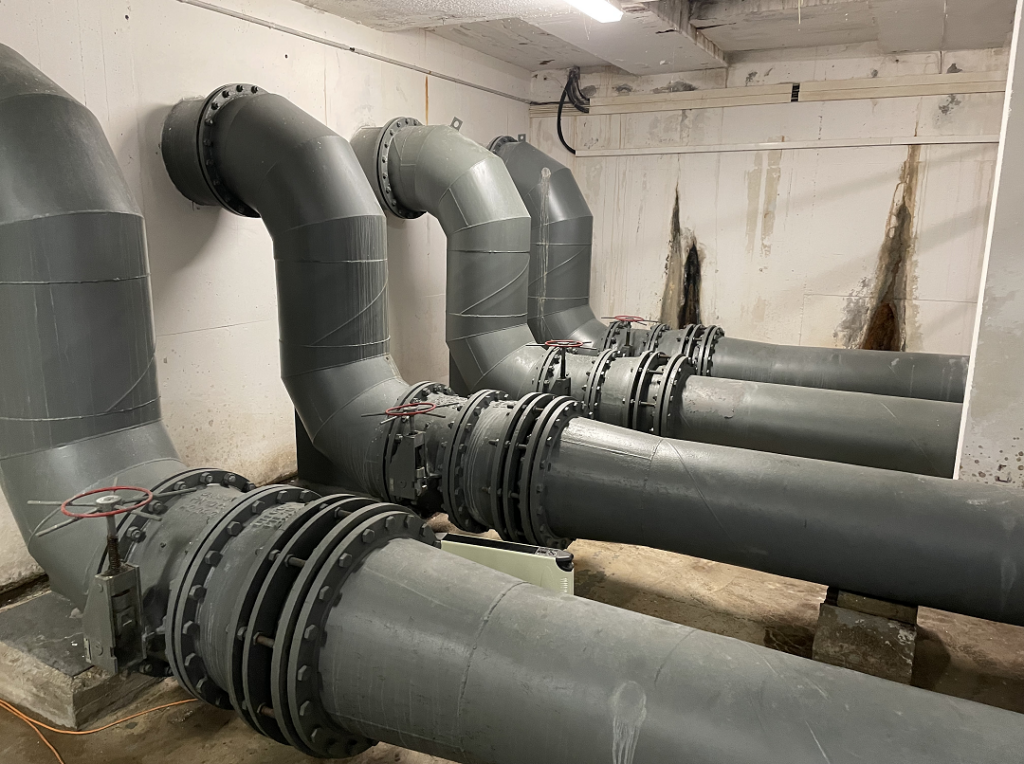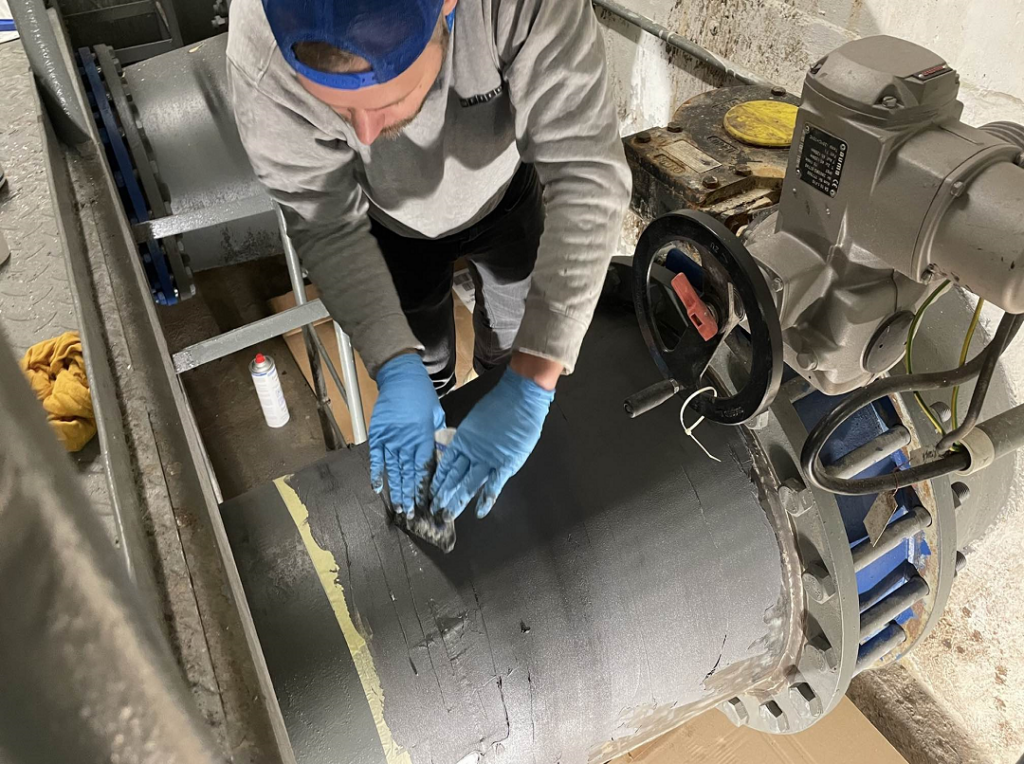Sewage or drainage pipes are part of large drainage or sewage treatment plants. They are built into buildings or run underground. Although they are generally constructed to last a long time, they are subject to wear, tear and ageing due to continuous use. If there are holes in a drainage pipe or any other damages, rapid action is required. We show you how to sealing sewage pipes – quickly and at low cost!
Wear and corrosion on sewage pipes
Sewage pipes and pipelines are exposed to enormous loads every day. They mainly transport water from one place to another. But not all water is the same: sewage pipes have to cope with varying degrees of strain, ranging from wastewater to rainwater or mixed water. It is evident that it makes a big difference whether wastewater from toilets runs through the pipes or clean rainwater. The amount of dirt or chemicals in the water determines the speed at which wear and corrosion occur.
Sealing sewage pipes – an application example
The following case occurred at a wastewater clarifier: the return pipes were quite old and there were holes in the pipe wall due to corrosion and wear. The pipes were leaking and starting to drip. So a fast repair solution was needed. But how can a sewage pipe be sealed without disconnecting it from the entire system?


Preparations for repair work – what requires special attention?
After an initial assessment of the damaged sewage pipes, the right product was selected and the repair work planned. Important fact: the temperature in the sewage treatment plant was around eleven degrees. This is not a great temperature for applying repair products, which is why we heated the room in the sewage treatment plant to 15 degrees with the help of radiant heaters.
Ready to start: sealing sewage pipes step by step
In order to be able to seal the sewage pipe, we first focused on the surface pre-treatment. We sandblasted the damaged pipes, e.g. to remove old paint. We then applied our WEICON Cleaner Spray S and cleaned the pipes.
Now the actual repair work began. First of all, the holes had to be filled. To do this, we slightly heated some wire mesh, then we adjusted its shape and placed it on the damaged sewage pipe for stabilisation. To fix the wire mesh to the pipe, we attached its corners with our WEICON Repair Stick Copper. In the next step, our steel-filled epoxy resin system WEICON A was used. The epoxy resin system is perfect for removing corrosion damage and pitting or for repairing holes and cavities. In this case, WEICON A provides a real alternative to welding, as the application of the epoxy resin does not cause thermal distortion as in welding.


Let’s continue! To seal the sewage pipe, further stabilisation with our WEICON Pipe Repair-Kit is required. It is used for the emergency repair of damaged pipes and pipelines. The set includes a repair tape with glass-fibre reinforced plastic which is impregnated with a special resin. If you immerse it in clean water and then wrap it around the damaged area, the special resin hardens after around 30 minutes. Once fully cured, the repair tape can be painted over or coated.
Finally, we sealed the sewage pipes with WEICON Ceramic BL. The mineral-filled epoxy resin system protects against corrosion and provides sewage pipes with an appropriate finish.



Save time, money and resources
The entire repair on site took just five hours. And it took around 24 hours for the products to cure fully. The pipes were then ready for use again. To mention it once again: the repair was carried out without dismantling the pipes, which saved an enormous amount of time. If the customer had had to install new pipes or dismantle the old ones for repair, the sewage treatment plant would have been out of action for several days. In addition, a new pipe would have cost three times as much. Another advantage? Repairing the sewage pipes is more sustainable: instead of installing new sewage pipes, material resources were saved by repairing the old ones.
Large-scale pipe repairs
By the way, we once repaired pipelines over a distance of 100 kilometres with one of our epoxy resin systems. Almost a tonne of our WEICON HB 300 was used for the repair. Intrigued? Find out more about the project here.